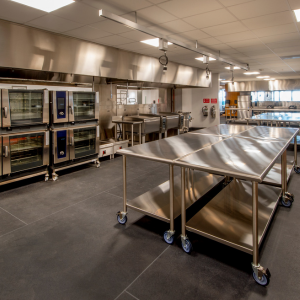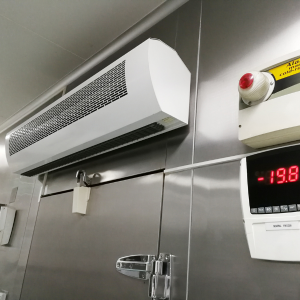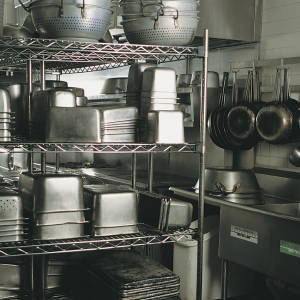In any successful restaurant business, organization is key – especially when it comes to the storeroom. From fresh produce to spices, canned goods, beverages, and cleaning supplies, restaurant storerooms house a plethora of items essential to daily operations. An organized storeroom ensures smooth functioning and can significantly enhance productivity, cut down on waste, and save money. So, how does one go about creating an efficient restaurant storeroom? Let's break it down into manageable steps.

Step 1: Evaluate Your Storeroom Space
Start with the space you have. Consider its size, layout, and conditions, such as temperature and humidity. These factors will determine how and where items are stored. The aim should be to make the best use of available space without overstuffing it, as it can lead to spoilage and loss.
Step 2: Design Your Layout
Create designated zones for various categories, like dry goods, frozen goods, fresh produce, non-food items, and so on. Your layout should reflect the flow of your kitchen, with items used more frequently stored closer to the kitchen door. Moreover, the FIFO (First In, First Out) method should be implemented in all zones. Always place newly received items at the back and move older stock to the front, ensuring it gets used first.
Step 3: Install Appropriate Shelving
Opt for sturdy, adjustable shelving units. They offer flexibility and can be rearranged based on changing needs. Remember to keep heavier items on lower shelves for safety reasons. If feasible, choose shelves that allow air to circulate the items to prevent spoilage.
Step 4: Implement A Labeling System
Labeling is an essential part of storeroom organization. It not only aids in quickly locating items but also plays a significant role in inventory management. Labels should include the item's name, the date of receipt, and the expiration date. Color coding can also be used to quickly identify different categories of items.
Step 5: Regularly Take Inventory
A well-maintained inventory can save your restaurant from running out of necessary items, overstocking, and wasting supplies. Regular inventory checks can also help identify any potential issues like theft or spoilage. Leverage inventory management software to streamline this process.
Step 6: Maintain Cleanliness
A clean storeroom is a healthy storeroom. Regularly cleaning shelves, floors, and storage bins to prevent pests and contamination. Additionally, keep a separate area for cleaning supplies and ensure they're not stored next to food items to avoid accidental contamination.
Step 7: Train Your Staff
Ensure every staff member understands the organization system, the importance of FIFO, and how to store different items properly. This way, the system will not break down when you're not there to supervise.
Step 8: Regularly Review & Adjust Your System
No system is perfect, and the needs of your restaurant will likely change over time. Regularly review your storage system and adjust it as needed. This might involve reorganizing the layout, adding or removing shelves, or updating your inventory system.
The Importance Of Controlling The Indoor Environment

In the restaurant industry, controlling the storeroom's internal environment, including temperature, lighting, and moisture levels, is essential to the operation. It goes beyond merely organizing shelves. An efficient control system for these elements ensures the freshness and quality of your stock and promotes safety and hygiene standards, which are non-negotiable in the food service industry.
Temperature Control
The first and arguably most critical aspect is temperature control. Different food items require different storage temperatures to maintain their freshness and prevent the growth of harmful bacteria. For instance, perishable foods like meat, dairy, and seafood need to be stored at 40°F (4°C) or below, while frozen goods require temperatures at or below 0°F (-18°C).
A storeroom should ideally have separate areas with different temperature controls for these items. Regularly check and record the temperature of these zones with a reliable thermometer to ensure consistency. Install alarms for temperature deviations to quickly address any issues.
Lighting Management
Appropriate lighting is necessary for the safety and efficiency of staff members. Adequate visibility prevents accidents and facilitates quick retrieval of items. LED lighting is an excellent option, as it provides good visibility, consumes less power, and has a longer life than traditional incandescent or fluorescent lighting.
Avoid direct exposure to light-sensitive items such as oils, spices, and certain wines, as it can degrade their quality. They should be stored in dark containers or shaded areas of the storeroom.
Moisture & Humidity Control
Moisture control is vital, especially for dry goods such as grains, pasta, and flour, as excess moisture can cause these items to clump or mold. On the other hand, items like fresh produce often require a certain level of humidity to maintain freshness. Therefore, monitoring and managing the humidity levels in the storeroom is crucial.
Invest in a good quality hygrometer to measure the humidity levels. Dehumidifiers can help maintain the appropriate humidity level for dry storage areas, which is typically below 15%. For areas that require higher humidity (like storing certain fruits and vegetables), using humidifiers or moisture-retention shelving can be effective. Refrigeration units also typically have built-in humidity controls.
Additionally, to prevent moisture buildup, make sure the storeroom is well-ventilated and free from leaks.
Controlling the storeroom's internal environment is a cornerstone of successful restaurant operations. By regularly monitoring and adjusting these elements, you ensure that your food items remain at their peak quality, contributing to the overall dining experience of your customers. This attention to detail ultimately impacts your restaurant's reputation and bottom line. Implementing these strategies may require an initial investment, but the returns in terms of minimized waste, improved food quality, and enhanced operational efficiency make it an investment worth making.
Now You're Set!

Organizing a restaurant storeroom might seem daunting, but it's an investment that can save you a lot of time and resources in the long run. A well-organized storeroom is more than just neatly stacked shelves; it's a strategic asset that can significantly boost your restaurant's efficiency and profitability. So, roll up your sleeves and start organizing – your restaurant, your team, and your bottom line will thank you.









